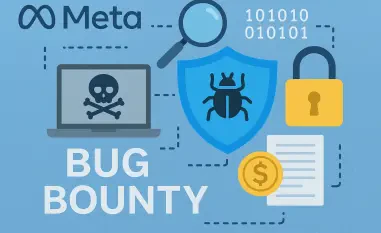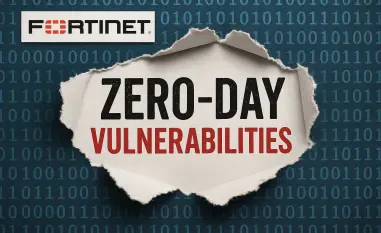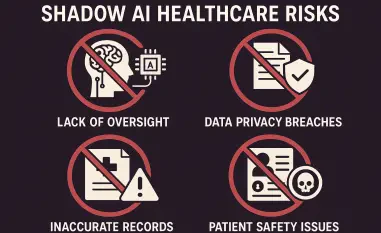In an era where mobile devices dominate financial transactions, a staggering reality emerges: cybercriminals are increasingly targeting these platforms, with mobile fraud costing the global economy billions annually. Financial institutions face an uphill battle as sophisticated scams, such as authorized push payment fraud, exploit vulnerabilities in digital banking. This pressing challenge sets the stage for innovative solutions from industry leaders like OneSpan and ThreatFabric, whose recent partnership promises to reshape the fight against mobile-based cyber threats. By combining cutting-edge technologies, their collaboration aims to safeguard the financial services sector in a mobile-first world.
Understanding the Mobile Fraud Landscape
Mobile fraud has surged as a critical concern, driven by the widespread adoption of smartphones for banking and payments. With millions of users relying on mobile apps for daily transactions, cybercriminals have found fertile ground to launch attacks, exploiting the convenience of these platforms. The financial services sector, in particular, bears the brunt of this threat, facing losses from scams that manipulate trust and bypass traditional security measures.
A notable trend is the rise of authorized push payment (APP) fraud, where victims are tricked into transferring funds to fraudsters under false pretenses. Mobile devices, as the primary gateway for consumer interactions with banks, amplify the risk, serving as both a tool for convenience and a point of vulnerability. This dynamic has pushed cybersecurity to the forefront of industry priorities, demanding robust defenses against ever-evolving tactics.
Key players like OneSpan, a leader in authentication and e-signature solutions, and ThreatFabric, a specialist in mobile threat intelligence, are stepping up to address these challenges. Their strategic partnership reflects a broader industry recognition that collaboration is essential to counter sophisticated threats. By uniting expertise, such companies aim to fortify digital ecosystems, ensuring trust and security remain intact for users worldwide.
The Strategic Partnership Between OneSpan and ThreatFabric
Combining Expertise for Enhanced Fraud Prevention
OneSpan’s strategic investment in ThreatFabric marks a significant step toward bolstering defenses against mobile fraud, particularly within financial services. This collaboration seeks to integrate OneSpan’s proven authentication technologies with ThreatFabric’s advanced mobile threat detection capabilities. The goal is clear: to create a seamless, powerful barrier against cyber threats that target mobile banking users.
ThreatFabric’s Fraud Risk Suite plays a pivotal role in this alliance, offering a software development kit that assesses multiple risk factors, including device integrity, user behavior, and real-time threat intelligence. By detecting issues like device takeovers and banking Trojans, the suite empowers financial institutions to act swiftly. When paired with OneSpan’s secure authentication methods, this creates a comprehensive shield that addresses vulnerabilities at multiple levels.
The synergy of these technologies enables proactive fraud prevention, focusing on identifying threats before they materialize into losses. Real-time monitoring and behavioral analysis ensure that suspicious activities are flagged instantly, allowing for immediate intervention. This partnership exemplifies how specialized tools can merge to tackle the nuanced challenges of mobile security in today’s digital landscape.
Market Impact and Industry Confidence
ThreatFabric has already established a strong foothold in the cybersecurity market, backed by significant funding from investors like Motive Partners and ABN AMRO Bank, totaling $12.6 million across prior rounds. This financial support underscores the industry’s confidence in ThreatFabric’s innovative approach to mobile threat detection. The addition of OneSpan’s resources further amplifies its potential to influence security standards.
The impact of this collaboration on the financial services sector is expected to be substantial, setting a benchmark for mobile security practices. By addressing critical gaps in fraud prevention, the partnership could inspire other firms to adopt integrated solutions, driving a wave of innovation. Financial institutions stand to benefit from enhanced protection, which in turn strengthens customer trust in digital banking platforms.
Looking ahead, this alliance may shape broader industry trends, encouraging a shift toward collaborative, technology-driven security models. As mobile fraud tactics grow more complex, partnerships like this one signal a commitment to staying ahead of cybercriminals. The focus on cutting-edge solutions could redefine how banks and fintech companies approach risk management over the coming years.
Challenges in Combating Mobile Fraud
The battle against mobile fraud is fraught with obstacles, primarily due to the rapidly evolving nature of cyber threats. Attackers continuously adapt their methods, deploying malware, executing account takeovers, and leveraging social engineering to deceive users. These tactics exploit human behavior and technological weaknesses, making it difficult for static defenses to keep pace.
Traditional security measures often fall short in this dynamic environment, as they rely on reactive rather than preventive strategies. Many systems struggle to detect subtle anomalies in user behavior or device status, leaving gaps that fraudsters exploit. The need for real-time, proactive solutions has never been more apparent, pushing the industry to rethink conventional approaches to cybersecurity.
To overcome these hurdles, strategies like layered risk assessment and automated response mechanisms offer promising avenues. By evaluating multiple data points—such as device health, transaction patterns, and external threat feeds—banks can build a more resilient defense. Implementing these systems requires investment and adaptation, but they are crucial for staying ahead of sophisticated mobile fraud schemes.
The Role of Innovation and Technology in Fraud Detection
The cybersecurity industry is witnessing a paradigm shift toward data-driven, automated security solutions that prioritize efficiency and accuracy. These systems harness vast amounts of information to identify patterns indicative of fraud, reducing reliance on manual oversight. This transformation is vital for managing the scale and speed of mobile transactions in modern banking.
Integrating mobile threat intelligence with behavioral signals and device-level insights forms the backbone of advanced fraud detection. Such an approach allows for a granular understanding of user interactions, distinguishing legitimate activities from potential threats. Technologies developed by companies like ThreatFabric exemplify this trend, offering tools that analyze risks without disrupting the user experience.
The combined efforts of OneSpan and ThreatFabric highlight the importance of low-friction responses in security protocols. Real-time monitoring ensures immediate action against suspicious activities, such as blocking transactions or prompting additional verification. By minimizing interruptions for legitimate users while maximizing protection, these innovations strike a balance that is critical for widespread adoption in financial services.
Future Outlook for Mobile Security in Financial Services
As mobile fraud prevention evolves, emerging technologies are poised to play a transformative role in securing digital banking. Artificial intelligence and machine learning, for instance, offer the potential to predict and neutralize threats with unprecedented precision. These advancements could further disrupt the industry, setting new expectations for security over the next few years, from 2025 to 2027.
Partnerships like the one between OneSpan and ThreatFabric are likely to influence consumer expectations, pushing for seamless yet secure banking experiences. Their focus on integrated solutions may encourage other firms to prioritize collaboration, fostering a culture of innovation. This trend could redefine how financial institutions approach cybersecurity, emphasizing adaptability in the face of new challenges.
External factors, such as escalating global cybercrime rates and fluctuating economic conditions, will also shape the trajectory of mobile security solutions. Rising threats may accelerate the adoption of advanced tools, while economic constraints could limit investment in some regions. Navigating these variables will be essential for sustaining progress in protecting digital transactions on a global scale.
Conclusion: A Unified Fight Against Mobile Fraud
Reflecting on the insights gathered, the partnership between OneSpan and ThreatFabric stands as a cornerstone in the battle against mobile fraud, showcasing the power of collaborative innovation. Their combined expertise in authentication and mobile threat intelligence addresses critical vulnerabilities, offering a robust framework for financial institutions to build upon. This alliance not only enhances cyber defenses but also sets a precedent for industry-wide cooperation.
Moving forward, financial institutions are encouraged to adopt integrated, proactive security solutions as a priority to counter evolving threats. Investing in real-time monitoring and layered risk assessment emerges as a vital step to ensure resilience. Additionally, fostering partnerships with technology providers promises to unlock new capabilities, paving the way for sustained trust in digital transactions.
The journey ahead demands continuous adaptation, with an emphasis on leveraging emerging tools to stay ahead of cybercriminals. By embracing a forward-thinking mindset, the financial sector can transform challenges into opportunities, strengthening the foundation of mobile banking security. This unified approach offers a blueprint for navigating the complex landscape of cyber threats with confidence and foresight.













